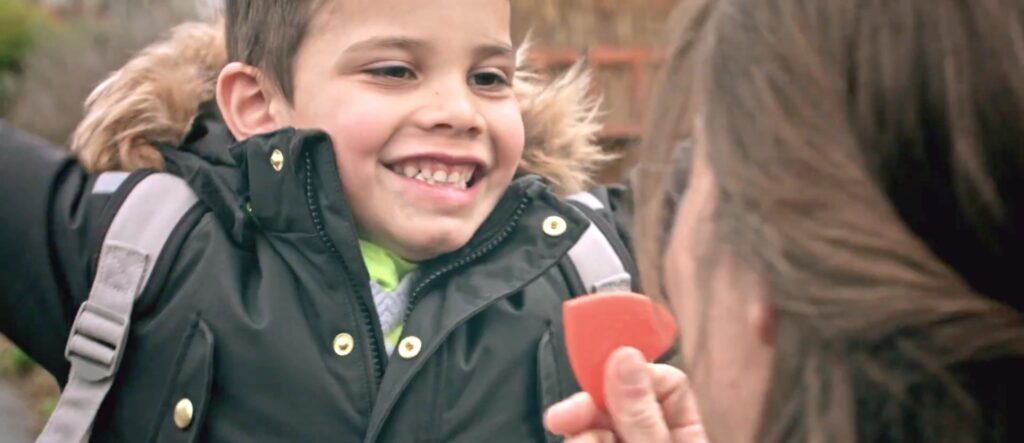
Porges, S. W. (2011). The polyvagal theory: Neurophysiological foundations of emotions, attachment, communication, and self- regulation. New York, NY: W. W. Nortion and Company. Rothbart, M. K. & Rueda, M. R. (2005). The developmentof effortful control. In U. Mayr, E. Awh, & S. Keele (Eds.), Developing individuality in the human brain: A tribute to Michael […]

Emotion Regulation • Sixteen-month-old Jack is at the doctor’s office for his checkup and is afraid of getting a shot. His mother, Estee, wants to help him lower his anxiety (Dial Down). • Estee acknowledges and validates Jack’s fear by saying in a comforting voice, but with a long frown on her face, “I know […]

Developing your child’s ability to self-regulate requires you to observe her closely and respond appropriately. From birth, you help your child regulate her fluctuating arousal states. We call this simple self-regulation model Dial Up and Dial Down. • Dial Down: When you rock your fussy child in a quiet room before bed, you are helping […]

Your interactions with your child play an important role in her future capacity to self-regulate. Whenever you calm your own anxiety, control your anger, manage powerful emotions, or delay gratification, you are regulating your internal states. Modeling how you regulate your own emotions or behavior in various situations helps your child learn to do the […]

You have probably noticed that some children are sensitive to the slightest noise, while others require a very loud noise to respond. Some children can do errands with you all day and not get cranky, while others get fussy and need some quiet time after a short outing. If you want your child to thrive […]

The Dial Up and Dial Down Model “The better I self-regulate as a parent, the better my child will self-regulate. The better my child self-regulates, the less stress I feel.” – DR. STUART SHANKER

Allard, L. T. & Hunter, A. (2010). Understanding temperament in infants and toddlers. Retrieved from http://csefel.vanderbilt.edu/resources/wwb/wwb23.html Brazelton, T. B. (1983). Infants and mothers: Differences in development (revised edition). New York, NY: Dell. Center for Early Childhood Mental Health Consultation. (n.d.). Infant toddler temperament tool (IT3). Retrieved from http://www.ecmhc.org/temperament/ Levine, M. (2006). The price of privilege: […]

Two-year-old Ava feels shy and cautious at birthday parties. Ava’s mother, Joan, tries everything she can to make Ava comfortable, but is getting frustrated when Ava clings to her at parties. Ava is a quiet child, but this behavior is extreme. Joan is an outgoing person who thinks that perhaps Ava is overwhelmed by too […]

Once you understand your child’s temperament, develop strategies that honor both your child’s temperament and her need to adapt to the surrounding environment. • Help your child express her feelings, desires, and preferences. • Anticipate issues before they occur, including situations that will overly frustrate or challenge her. Some frustration is important for growth, but […]

Think about yourself and your own temperament. Understanding your own temperament will help you identify the “goodness of fit” between your temperament and that of your child. Perhaps you’re an early riser while your child is a night owl. Did you, an introvert, give birth to a social butterfly? Are you stunned at how different […]



